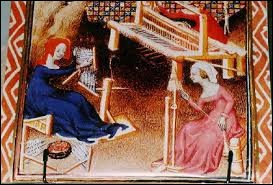What is the era when T-shirts were worth 400 thousand yen?

ByTimothy Takemoto
In contemporary society full of massive things, T - shirts of less than 1000 yen are not so rare, as products represented by 100 yen shops can easily be obtained at prices that can be said to be price destruction easily. In a society with a very fast consumption cycle, many products are quickly discarded, a modern society that can be said as a "disposable era", but in an age of ancient times when all clothes were sewn by hand, clothing was more He seems to have been carefully treated.
SleuthSayers: The $ 3500 Shirt - A History Lesson in Economics
http://www.sleuthsayers.org/2013/06/the-3500-shirt-history-lesson-in.html
The social structure of mass production and mass consumption like modern day was born in the mid 18th centuryIndustrial RevolutionYou can go back to. In the UK where the industrial revolution took place earliest, the field in which the transformation from in-house handicraft to factory-based machine industry first occurred was "clothing". In other words, woolen fabrics, mainly woolen products which had been knitting by hand, became able to produce cheaply and at high speed with the advent of looms and spinning machines, which led to the subsequent industrial revolution.
Considering this historical fact in the opposite direction, it can be interpreted that it was necessary to mechanize by looms and spinning machines because clothes were extremely expensive.

This is a painting depicting medieval Europe before the industrial revolution. The red inner that the man wearing the white pants on the right side is wearing is a general T-shirt at the time. Of course, this inner was knitted by hand instead of a machine.

Considering the manufacturing cost until this general medieval T-shirt is made, it will look like this. First of all, seven hours are required before sewing up a T - shirt even if it is skilled "Omiko." In addition to sewing work, we need time to weave the fabric. Generally T - shirt size requires roughly 4 yards (about 3.7 meters) of fabric, but the fabric can only weave 2 inches (about 5 centimeters) per hour. In other words, it will take about 370 ÷ 5 = about 72 hours to make a fabric for a T-shirt.
We also need time to spin the thread which is the raw material of the fabric. The fabric needs 12 wefts per inch and 1600 yards (about 1500 meters) of yarn is needed for the production of the fabric required for T-shirts, which means that it takes 400 hours for this production. By the way, the unmarried woman is called "spinster" in English, it seems that people who spin threads originate from living a life spun yarns without spare time to cook or raise children.

As mentioned above, manual work of 7 hours + 72 hours + 400 hours = 479 hours is required to make one T-shirt, and if it is multiplied by a minimum wage of 7.25 dollars (about 850 yen), it costs about 3,500 dollars (about 40 Ten thousand yen) will be calculated. In medieval Europe, one T-shirt was worth 400,000 yen. In addition, the raw material of the thread at that time is wool or cotton, there is no inexpensive synthetic fiber. Since wool and cotton can be collected only once a year, considering the sheep and cotton breeding expenses necessary for taking raw materials, the possibility that the T shirt amount was worth over 400,000 yen Thing.
Clothing which was very valuable in light of the value criteria at the time was a valuable thing which can not be thrown away at large, and even at the beginning of the 19th century, women who had three clothes were happy is. In addition, it is said that two out of these three garments are everyday wear and the best one wear is a monster wearable only in these scenes.

In Europe before the Industrial Revolution it is common for clothes to be handed over from the wealthy to the common people over time. Even worn out clothes are valuables for ordinary people, and they are handed over to brothers and children as "going down", and even when they are tattered they seem to have been repaired and repaired repeatedly. And it was said that clothing that was torn and no longer useful (rather than cloth) was used as a substitute for paper that was also a valuable item for books. This kind of circumstance seems to be a very rare reason for European clothes to survive as they are at that time.
Related Posts:
in Note, Posted by darkhorse_log







